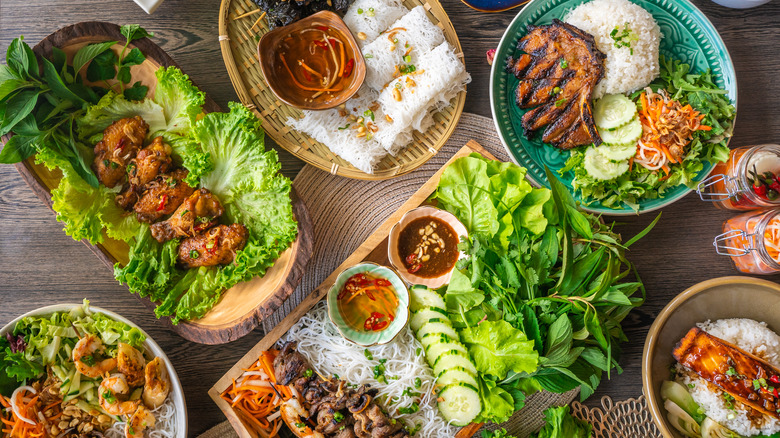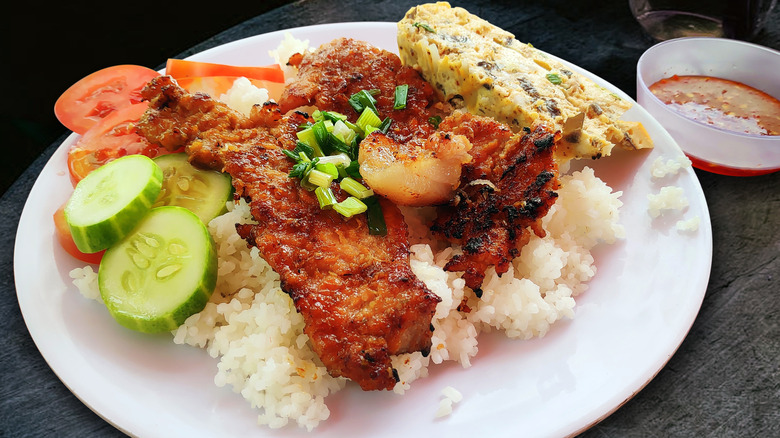What Vietnamese School Lunches Commonly Include
What comes to mind when you think of a packed school lunch? If you're from the United States, you may picture a classic turkey sandwich on sliced bread alongside an apple, a bag of chips, and a milk carton. According to Saveur, kids in Spain eat eggs alongside vegetable soup for lunch, while children in Argentina enjoy marinated veal accompanied by tomato and cucumber salad. With almost 200 countries worldwide, it's safe to say that lunches can look different in every time zone and world culture.
When diving into the importance of culinary practices worldwide, it's important to note cultural nuances that come with meaningful dining experiences. This is especially true when it comes to lunchtime in Vietnam. Children's traditional weekday lunches in Vietnam are not only made up of local ingredients and flavor profiles, but for rural students, lunches are mostly eaten at home and in the presence of family. Full of color and nutrients, Vietnamese school lunch is a meal to look forward to.
Vietnam school lunches always include rice, a lot of rice.
It's no surprise that the country with one of the largest productions of rice in the world (43.85 million metric tons according to The Takeout) is iconically known for serving rice as a staple in its children's lunches. Paired with a helping of rice, Vietnamese lunches are combined with a protein like fish, tofu, chicken, or pork. The protein can be dressed in signature Vietnamese sauces and spices like ca ri, or blended in a stir fry with regional vegetables. For school children, per Saveur, lunch can also take the form of a noodle soup or mi Quang, which Serious Eats describes as a "must-eat" dish from central Vietnam.
In addition to the trio of carbohydrates, protein, and vegetables, children's lunches in Vietnam have a dish called the tráng mięng which acts like a palette cleanser. This typically consists of fresh fruit like durian, guava, lychee, or dragon fruit. Then the meal is then topped off with a sweet dessert like che (as if the delicious Southeast Asian fruit wasn't enough to satisfy the sweet tooth) and served alongside a glass of soy milk.
As Vietnamese children primarily consume their lunch from home (as a necessity to not having a kitchen in schools), they typically have more time to eat and enjoy a well-rounded meal.

